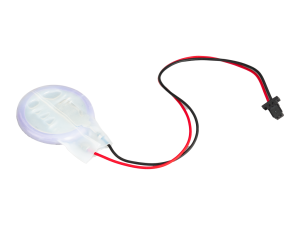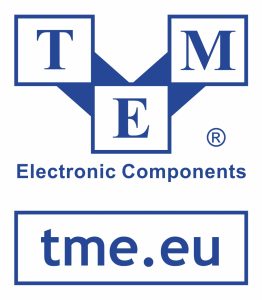
Raspberry Pi computers need no introduction. Moreover, nowadays, the British supplier is well-recognised all over the world. Its products are used to educate children and teenagers, they are present at the very core of numerous professional devices and constitute the basis for limitless custom projects implemented by enthusiasts, amateurs, or students. Therefore, we are really happy to inform you that Raspberry Pi products have been officially included in the TME product catalogue to make the latest solutions available for our clients.
Note also that the Raspberry Pi portfolio extends way beyond the core family of computers this brand is associated with. The RPi assortment also includes a number of specialist solutions, peripherals, accessories, and other complementary products.
Full Raspberry Pi product range
More information on the original Raspberry Pi products:
- Core Raspberry Pi computer range
- Convenient RPi400 version with keyboard and other accessories
- Miniaturised boards from Zero product family
- Development models in the Compute Module format
- RP2040 microcontroller and Pico series
- Assortment of extension boards and their capabilities
- Necessary peripherals, enclosures and other complementary products
- Selection of cameras supported by CSI bus
- Useful adapters and accessories
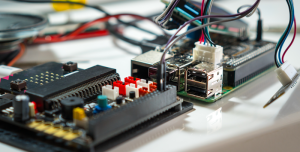
Raspberry Pi computers are designed for amateur and professional applications in various electronic devices – from the Internet of Things segment to multimedia applications, robot-assisted systems and industrial machinery controllers.
Raspberry Pi computers
Obviously, Raspberry Pi single-board computers are the company’s flagship products. Presently, their 5th generation is available, but older models are still popular due to their impressive capabilities.
The Raspberry Pi motherboard comes with USB, HDMI, and Ethernet (RJ45) ports, a slot for an SD card used as a hard drive, DSI and CSI ports (as per the MIPI specification) used to connect a display and camera, plus the characteristic multi-purpose GPIO connector. Thanks to the latter, you can access the inputoutput line, use SPI or I2C serial ports, and also a 3.3 V DC power supply line. Moreover, the computer comes with a built-in Wi-Fi and Bluetooth communication system.
The computer is supplied via a USB port (now USB-C, formerly microUSB), however, it can also be supplied via dedicated GPIO (2 and 4) pins or using the Power-over-Ethernet standard (necessary extensions are described below).
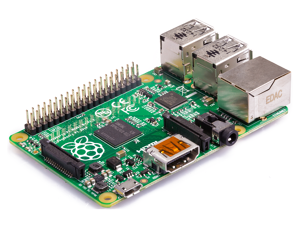
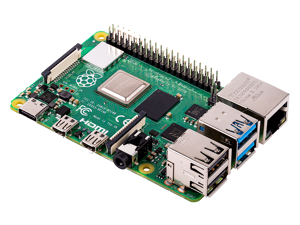
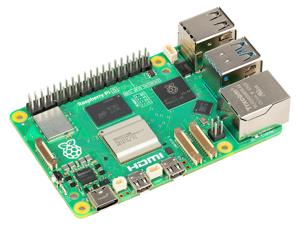
Raspberry Pi 5 is equipped with the dual-core, 64-bit Broadcom BCM2712 system, based on the Arm Cortex-A76 architecture and clocked at 2.4 GHz. Moreover, the computer can be fitted with operating memory up to 8 GB RAM and a graphic processor (GPU VideoCore 7) supporting the OpenGL and Vulkan technologies. New features of the 5th generation include:
- a port to connect extensions using the PCIe bus (via an adapter offered by TME);
- power switch circuit with a button (previously, RPi computers used to be booted as soon as they were supplied with power);
- RTC clock system placed on the PCB.
Raspberry Pi 400 project
The Raspberry Pi 400 computer was marketed shortly after the 4th generation board (which it includes). It is a device with a format that reminds classic computers from the 1970s and 80s, i.e. “micro computers”, whose motherboards were enclosed within a single housing with a keyboard. In fact, RPi 400 is a more practical RPi 4 computer format. Apart from a keyboard-enclosure, it comes with a mouse, power supply module, card with a pre-installed operating system and a well-illustrated, clearly written manual. Just connect an HDMI monitor and you can embark on an exciting adventure. This format appeals particularly to younger users and amateurs. Note also that, at the same time, its development possibilities are not limited here, as the enclosure comes not only with standard interfaces (e.g. USB ports), but also a slot providing access to GPIO leads.
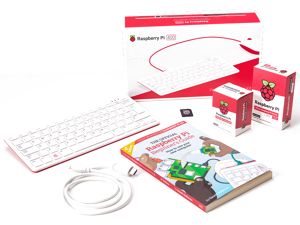
This comprehensive set includes a thorough, practical user’s manual.
Compact Raspberry Pi Zero models
Raspberry Pi Zero is a family of slightly “stripped down” models whose characteristic features include a small size and energy efficiency. Note here that even though the Zero version specifications are not as impressive as those of newer products from the supplier, you can still use them to implement impressive projects, such as a multimedia centre, a portable game console or a controller for a complex robot whose movements are based on the analysis of images recorded by a camera connected to the motherboard. The advantages of the RPi Zero also include long battery life and a limited amount of heat generated, which perfectly satisfies the needs of mobile devices, remote sensors, and small-sized IoT equipment. Despite its small size, the board is equipped with an HDMI connector, USB output, SD card slot, CSI port, and a built-in wireless communication module (Zero W variant).
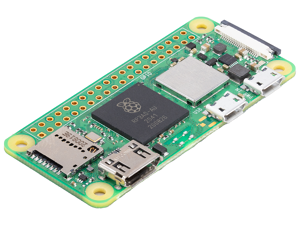
The Raspberry Pi Zero is equipped with a small-sized PCB (65 x 30 mm).
Compute Module format
Despite the fact that Raspberry Pi computers are very compact, they turn out to be too large for certain projects. Moreover, some projects require the full computing power of a processor, but the RPi Zero’s capabilities are limited. In other cases, the locations of a factory-mounted USB port or HDMI output turn out to be suboptimal, and the RJ45 port is just unnecessary. In order to facilitate building devices within even more extensive range of formats and simultaneously retain the advantages of the platform, starting from a few generations back, the manufacturer provides miniaturised versions of its computers, i.e. the Compute Module versions. They come with all the key motherboard components (the same processor, operating memory, optional wireless communication circuit), but with no additional components (such as ports or filters). Instead, they are equipped with a high-density connector to seat a module in the target circuit. The capabilities of such connectors are incomparably more extensive than those of a regular GPIO and provide designers with virtually unlimited access to the processor functionalities.
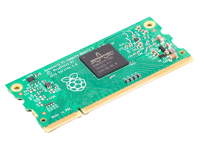
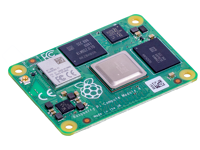
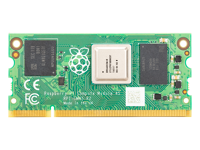
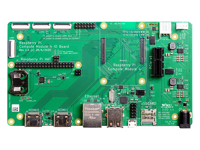
Up to the 4th generation, RPi computers in the CM format were provided as boards whose size was identical to the SODIMM memory module size. Therefore, a standard connector, like the one used to manufacture laptops, was sufficient to make a suitable connection. The latest module variants have different sizes and come with leads in the form of SMD board-to-board connectors (100 contacts x 2 connectors), which translates into an even lower profile of an installed circuit.
The TME product catalogue also includes a special RPI CM4IO development board for prototyping devices using the Compute Module. This platform includes a power supply system, real-time clock, leads for standard connectors (HDMI, USB, GPIO, CSI, DSI), and a PCIe card slot.
Raspberry Pi Pico platform
Raspberry Pi computers demonstrate parameters similar to those of desktop or laptop computers. At the same time, in very simple projects which do not require utilising the full Raspberry Pi computing capabilities or even the video or audio outputs, a single-board computer is rarely an optimum alternative to circuits fitted with microcontrollers, e.g. Arduino boards.
Therefore, the Raspberry Pi engineers designed their own microcontroller model. Designated as RP2040, it is based on the Cortex M0+ architecture. These units are installed in QFN56 enclosures, come with 264 kB operating memory, and support external memory modules up to 16 MB. Integrated peripherals include serial bus controllers (UART), SPI, I2C and USB, ADC converters, plus 16 independent PWM generators.
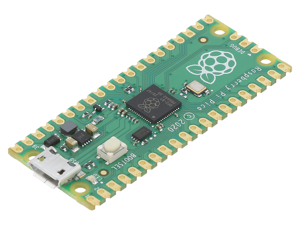
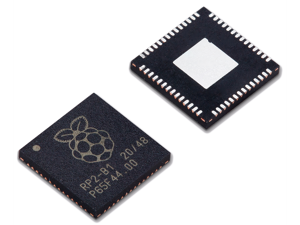
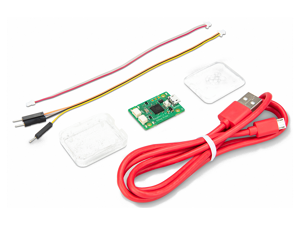
The RP2040 system can be successfully used as a central controller for any project, but the platform designed by the provider, i.e. the Raspberry Pi Pico module, is the most convenient method of its implementation. This small-sized (51 x 21 mm) board circuit includes all components that are necessary for microcontroller operation (2 MB memory, voltage regulators, Micro USB slot, etc.) and provides users with access to 26 multi-purpose GPIO leads. It also supports voltages ranging from 1.8 V to 5.5 V DC.
RPi Pico is extremely easy to use, as, once connected to a computer, the board “introduces itself” as a portable USB memory module, which is one of its key advantages. Then, a program written in MicroPython must be uploaded and… here we go!
Extension modules connected to GPIO
Another important advantage of Raspberry Pi computers is a comprehensive range of extension cards that enhance their functionalities. They are designed as HATs (Hardware Attached on Top) to be placed on the motherboard using a GPIO connector, spacers and four mounting holes. Most of them come with pass-through connectors that provide users with convenient access to inputoutput pins. As the GPIO pinout remains unchanged, the HATs are compatible with the majority of RPi models.
Using RPi as a digital television receiver facilitates the implementation of numerous interesting projects, such as building an automated recorder or a scanner searching for test transmissions. The tuner also enhances the capabilities of home or mobile multimedia centres.
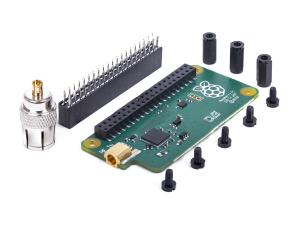
This HAT provides access to numerous switches, sensors and actuators, allowing users to gain expertise regarding program interactions with electronic components. The circuit includes, for example, environmental sensors, a colour/light intensity sensor, LED matrix and a joystick.
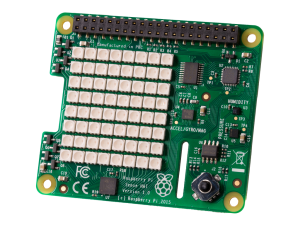
The card has the same size as the RPi Zero and is equipped with an inputoutput system operated via the I2S bus. It is designed for electronic engineers and ham radio operators to implement communication, IoT and *smart home* projects or to modify consumer electronics devices, etc.
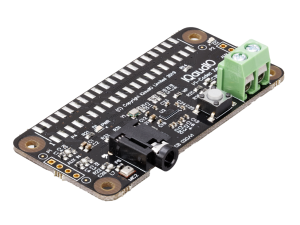
A sound card with an analogue output to RCA slots, separate headphone amplifier and a 3.5 mm jack connector. Its installation does not require soldering, and it is powered directly by GPIO.
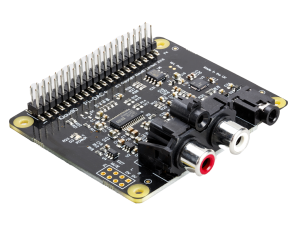
It is a structural extension module similar to the one mentioned above, but it is based on a higher class PCM5242 system. It offers outstanding sound quality with a professional noise-to-signal ratio. Designed with music and HiFi projects in mind.
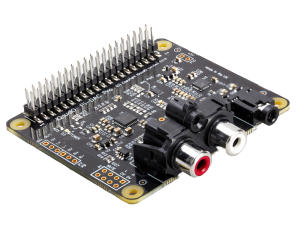
An audio extension module with a built-in stereo amplifier rated at 35 W per one channel. With this card, the RPi can be used as a basis for building a custom consumer electronics device, car radio or for implementing another multimedia project.
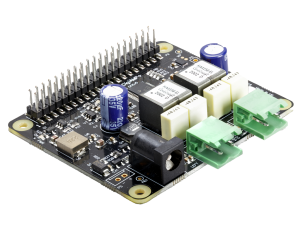
A card with the RP2040 system. It facilitates communication with the latest electronic and electric LEGO® components (four 6-pin connectors). It also offers higher (Python – on a computer) or lower (MicroPython – on a microcontroller) programming levels. It replaces the original LEGO® Hub to control robots made of LEGO bricks. Requires an external power supply module.
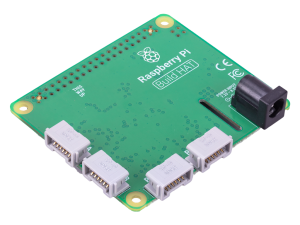
A HAT which is compatible with 4 I 3B+ models to supply a computer through a mains line, in the Power-over-Ethernet standard. Its features include maximum power of 20 W, full circuit isolation, and an integrated processor cooling fan to build compact IoT devices.
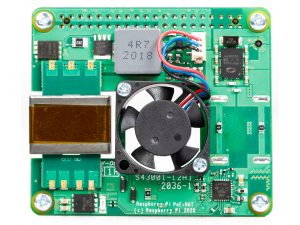
5th generation RPi models come with a PCIe bus connector to enable computers to support cards designed for desktop computers. This long-awaited functionality offers the possibility to connect an SSD drive (M.2 format) to RPi, which not only accelerates data transmission and system operation, but also facilitates building such devices as network drives and servers. The M.2 HAT ensures permanent connection of such a drive to a computer.
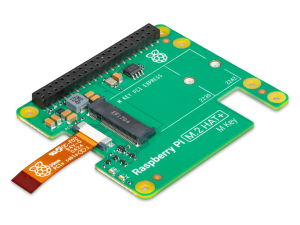
The above presents the assortment of HATs offered by Raspberry Pi, but note that many other manufacturers available in the TME product catalogue offer such extension modules, too.
Original extension modules/HATs
Original accessories
The popularity of Raspberry Pi has resulted in an emergence of the entire market of accessories designed or adapted to operate with these single-board computers. However, numerous complementary products and peripherals are manufactured solely by Raspberry Pi, and this product range is also available in the TME product catalogue.
Here, indispensable components include power supply modules and enclosures. The former are manufactured according to a precise specification to ensure that computer operation is trouble-free, even under serious loads. Enclosures, on the other hand, feature numerous practical solutions – not only protecting the PCB and components, but also providing access to USB, Ethernet and HDMI ports and other connectors placed on the motherboard, including GPIO leads. The design also provides for CPU and RAM cooling, and slots for swapping SD cards and routing ribbon cables to connect a computer to a display or camera.
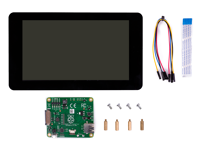
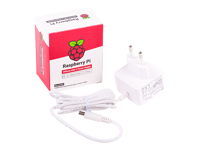
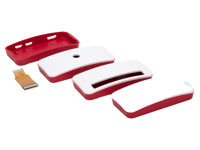
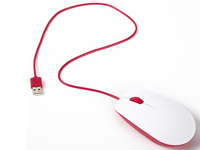
Moreover, Raspberry Pi also provides typical peripherals, such as mouse devices and keyboards in colour versions typical for this brand. One should also take a closer look at the Raspberry Pi Touch Display, i.e. a 7-inch display with a touch panel. This module uses a DSI connector, is supplied via a GPIO port, and the holes in its bezel facilitate mounting a display or attaching a computer PCB to build integrated devices more easily.
Cameras and lenses
Apart from the DSI slot, the Raspberry Pi computer motherboards also feature CPI (Camera Serial Interface) connectors in the MIPI standard. It enhances communication with camera modules of various applications, with minimal processor load, via a connection made with a flat, flexible cable. The range of Raspberry Pi-compatible cameras includes numerous formats: from very compact devices that are perfectly suitable to implement minor robotics and other amateur projects, to more advanced units with the resolution even up to 11.9 Mpx, including a full-frame shutter (recording very rapid movements), matrices recording infra-red images (night-vision modules), and ultra wide-angle lenses (e.g. 120°). Additionally, some modules make it possible to attach separately purchased lenses demonstrating extraordinary optical parameters.
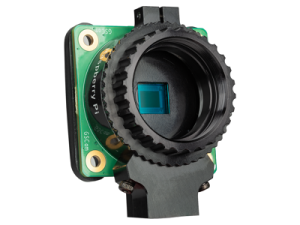
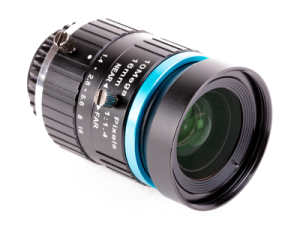
Lenses
Finally, it must be mentioned that the Raspberry Pi product portfolio includes a number of smaller, but also very important, accessories that often become indispensable to implement a project or even use a computer on a daily basis.
The cables offered by Raspberry Pi make it possible to supply a computer (USBmicro and USB-C formats) and use its ports (USB 3.0), while simultaneously retaining their full current-related and transmission capabilities.
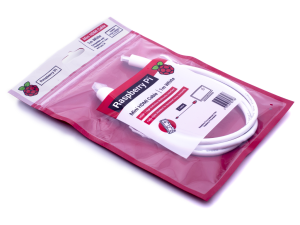
Newer and smaller RPi versions come with miniature HDMI ports, so special cables must be used to connect them, and the supplier offers both full-size versions (length up to 2 m) and short cables operating as adapters.
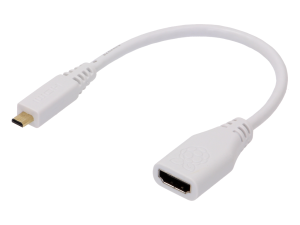
Miniature adapters for different formats of connectors belonging to the same product family make it possible to reduce the number of cables and use old-style cabling with newer Raspberry Pi board models.
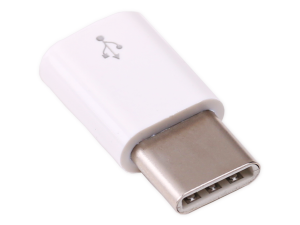
Active processor and memory cooling is useful when a processor operates under load for prolonged periods of time, or it is even necessary in such cases as component *overclocking* and *overvoltage*. A properly shaped heat sink with a small fan provides necessary cooling and only slightly affects the computer size.
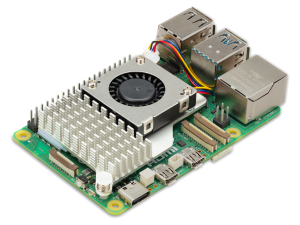
Another type of heat sink/fan set, this time designed for the original Raspberry Pi enclosures, allowing to cool the processor down, even if it is fully covered by the body.
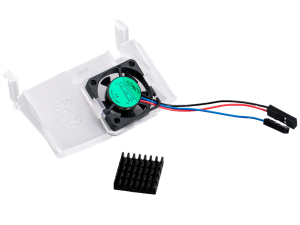
Since an antenna cable needs a coaxial connector, Compute Module format computer leads come with a separate U.FL port to connect a Wi-Fi antenna. This set can be used to connect any given radiator with an SMA pin.
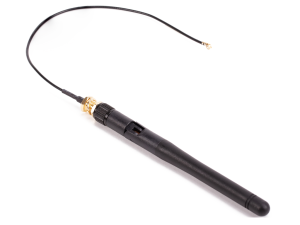
In contrast to older generations, RPi 5 comes with a real-time clock (RTC) installed on the motherboard. A battery (Panasonic ML-2020) with a connector sustains its operation even during power outage.
